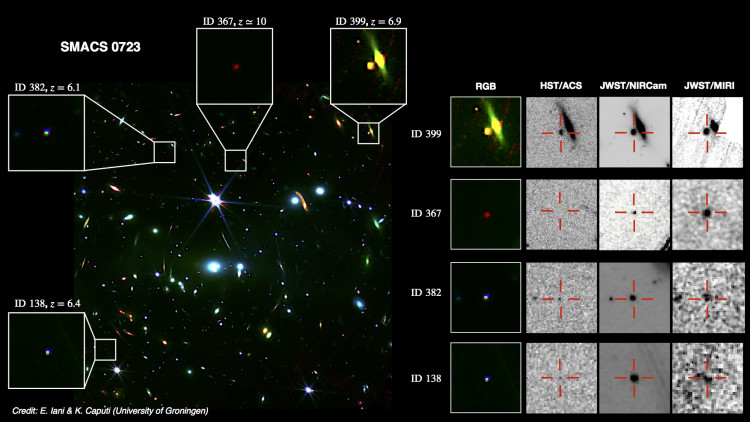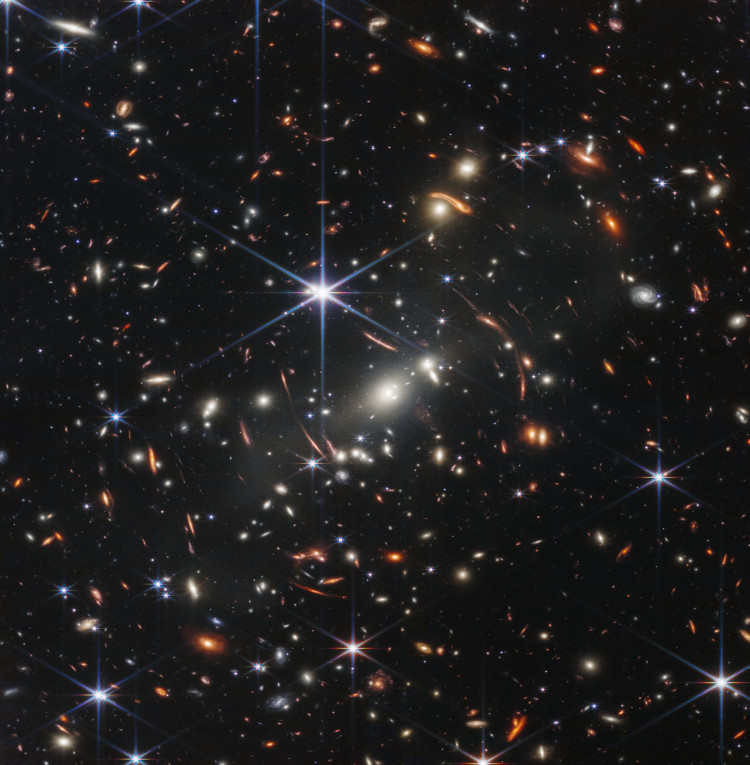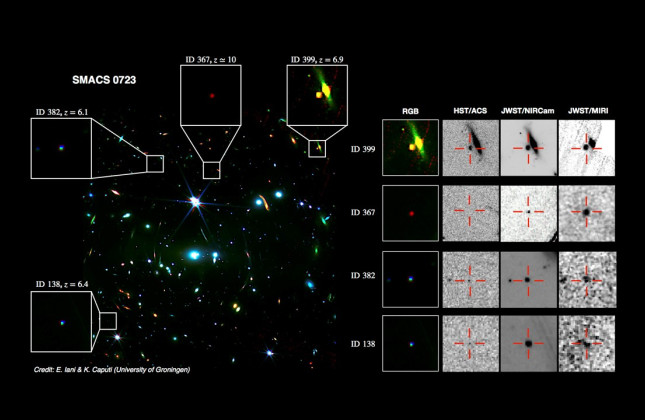For the past twenty years, researchers had to rely on infrared images from Spitzer. This telescope could only look back at long wavelengths to about 2 to 3 billion years after the Big Bang. "You might think the one billion years off by Webb doesn't matter that much," says research leader Edoardo Iani (University of Groningen) "But you arrive right at the time when the first galaxies were formed. So we are very happy with our findings."
Thanks to infrared images from the James Webb Space Telescope, astronomers were able to spot, among other things, galaxies that had not been discovered yet. They were also able to calculate more precisely how many stars were present in very young, distant galaxies. The reason why earlier estimates with the Hubble Space Telescope were inaccurate, is that those did not collect much of the originally visible light because it was stretched by the expansion of the universe.
Co-author of the analysis Karina Caputi (University of Groningen), expects more and deeper images to become available soon. "Maybe it will allow us to penetrate a bit into the dark ages. When we designed the MIRI instrument, we had secretly hoped that we would achieve that, but now it looks like it's actually going to happen."
About MIRI
MIRI was developed by NASA and ESA together with several European partners. The MIRI spectrometer was realized thanks to the efforts of the Netherlands Research School for Astronomy (NOVA) and research institutes in the United Kingdom and Germany. Design and construction were carried out by the NOVA Optical-Infrared Group at ASTRON in Dwingeloo in collaboration with several other Dutch institutes and universities.
Scientific paper
A first look into the nature of JWST/MIRI 7.7 micron sources from SMACS 0723. By: Edoardo Iani, Karina I. Caputi, Pierluigi Rinaldi & Vasily Kokorev. Accepted for publication in: The Astrophysical Journal. [original: <link follows> | preprint]
 Analysis of the very first image from the James Webb Space Telescope shows that the infrared telescope reveals details of galaxies from the time when the universe was only about 1 billion years old. Left: the first image with four galaxies highlighted. On the right, the four galaxies each seen with a different telescope or instrument. HST is the Hubble Space Telescope. JWST/NIRCam is the NIRCam instrument on the James Webb Space Telescope. JWST/MIRI is the MIRI instrument on the James Webb Space Telescope. A striking example is that galaxy ID 367 cannot be seen with Hubble. (c) JWST/E. Iani & K. Caputi [high resolution]
Analysis of the very first image from the James Webb Space Telescope shows that the infrared telescope reveals details of galaxies from the time when the universe was only about 1 billion years old. Left: the first image with four galaxies highlighted. On the right, the four galaxies each seen with a different telescope or instrument. HST is the Hubble Space Telescope. JWST/NIRCam is the NIRCam instrument on the James Webb Space Telescope. JWST/MIRI is the MIRI instrument on the James Webb Space Telescope. A striking example is that galaxy ID 367 cannot be seen with Hubble. (c) JWST/E. Iani & K. Caputi [high resolution]
 Webb's first photo from early July 2022. The photo differs slightly from the one used by the Groningen researchers. The one from the Groningen researchers is tilted a few degrees to the right and has sharper colors thanks to improved image processing. (c) JWST [high resolution]
Webb's first photo from early July 2022. The photo differs slightly from the one used by the Groningen researchers. The one from the Groningen researchers is tilted a few degrees to the right and has sharper colors thanks to improved image processing. (c) JWST [high resolution]
